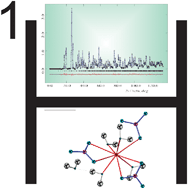Crystallography of hydrogen-containing compounds: realizing the potential of neutron powder diffraction†
Abstract
Hydrogen forms more compounds than any other element in the Periodic Table, yet methods for accurately, precisely and rapidly determining its position in a crystal structure are not readily available. The latest generation of high-flux neutron powder diffractometers, operating under optimised collection geometries, allow hydrogen positions to be extracted from the diffraction patterns of polycrystalline hydrogenous compounds without resorting to isotopic substitution.


 Please wait while we load your content...
Please wait while we load your content...